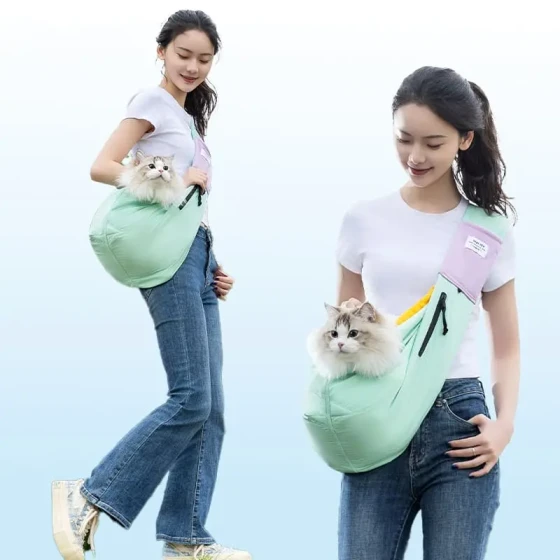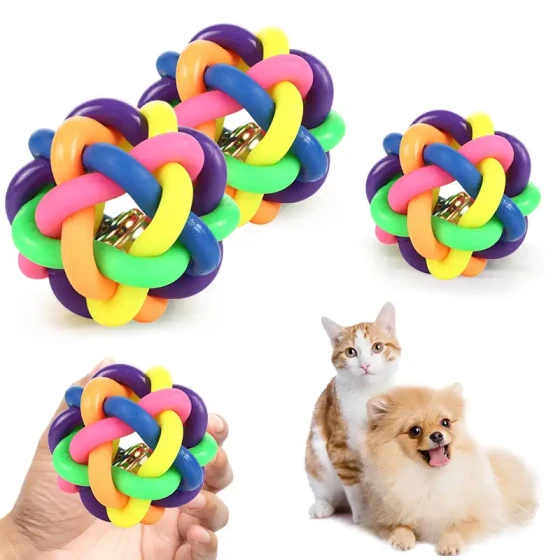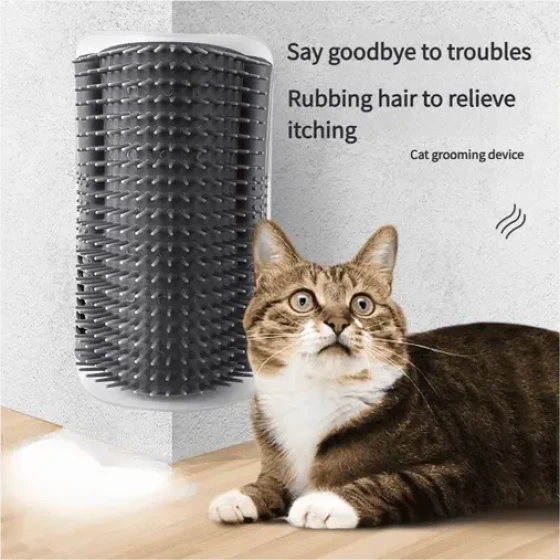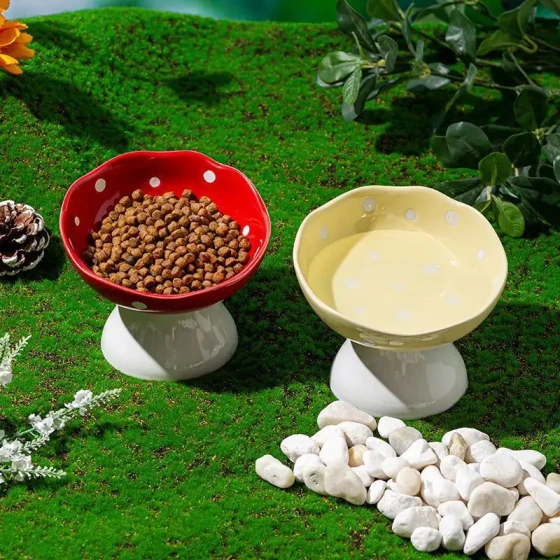How Much Cat Food Does a 1kg Kitten Eat Per Day_Detailed Explanation of Daily Feeding Standards for Kittens
Raising a lively and adorable little kitten is the dream of many “pet owners.” But kittens are like little batteries that “charge for five minutes and call for two hours,” expending energy quickly and having especially strong nutritional needs. For kittens weighing around 1 kilogram, how much cat food should they eat in a day? Generally speaking, a 1kg kitten needs about 35 grams of dry cat food daily, or about 10% of its body weight if feeding raw food, but the exact amount needs to be adjusted according to the kitten’s age, activity level, type of food, and individual differences.
The kitten stage (usually 0-12 months) is a critical period of growth and development, like spring bamboo shoots rapidly “shooting up,” with bones, muscles, and the immune system developing quickly. Therefore, their energy and nutritional needs are far higher than adult cats. Insufficient feeding may cause malnutrition and affect healthy growth; excessive feeding may lead to obesity and pose future health risks. Therefore, understanding the feeding standards for kittens and practicing scientific feeding is a must-learn lesson for every responsible “cat mom and dad.”
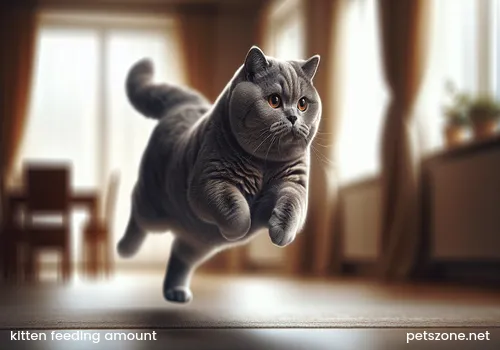
Daily Feeding Standards for Kittens: Comprehensive Analysis of Influencing Factors
Determining the daily feeding amount for a 1kg kitten is not a simple one-size-fits-all decision; it is influenced by multiple factors. Just like humans eat differently depending on whether they are athletes or office workers, kittens also have varied needs.
1. Age Is the Primary Consideration
Kittens grow very fast, and nutritional needs differ significantly at various months of age.
- 1-3 months (Weaning Period): During this phase, kittens have delicate digestive systems and very strong nutritional demands, but their stomach capacity is small. It's recommended to feed small meals multiple times a day, 4-5 times. They will gradually transition from mushy food to softened kitten kibble or kitten canned food.
- 3-6 months (Rapid Growth Phase): The kitten’s body size and teeth develop quickly, and activity greatly increases. At this stage, feeding frequency can gradually drop to 3-4 times per day, with increased meal sizes. A 2-month-old, 1kg kitten may have a total daily calorie need around 175 kcal.
- 6-12 months (Transition Period): Although growth rate slows, sufficient nutrition is still needed to support further development, feeding 2-3 times daily, gradually moving towards adult cat feeding patterns.
2. Weight Is an Important Indicator
Weight is a crucial indicator of food amount. Generally, for every 500 grams of body weight, around 20-30 grams of cat food is needed daily. For raw-fed kittens, daily feeding is usually recommended at 10% of body weight. For example, a 1kg (equivalent to 2 jin) kitten on a raw diet requires about 100 grams daily. Packaging often marks recommended daily feeding amounts; pet owners can refer to these based on their kitten’s weight and activity level.
3. Activity Level Determines Energy Consumption
Like humans, a cat’s activity level directly affects energy expenditure.
- Active "Little Troublemakers": If your 1kg kitten is a “parkour expert,” leaping everywhere all day, their energy consumption is naturally higher, possibly needing 10-20% more food than quieter kittens of the same weight to replenish energy.
- Quiet and Lazy "Little Masters": If they prefer to lie in corners sunbathing and napping, with low activity and energy consumption, feeding amounts should be reduced appropriately to avoid obesity.
4. Cat Food Type and Nutritional Content
Different brands and types of cat food have varying nutritional components and caloric densities.
- High-Quality Kitten Food: Food specially designed for kittens usually contains higher quality protein, fat, and essential vitamins and minerals to support rapid growth and immune development. For example, the American Association of Feed Control Officials (AAFCO) guidelines recommend a minimum of 30% crude protein and 9% crude fat for kitten food.
- Dry Food vs. Wet Food: Dry food typically has higher caloric density, containing 300-400 kcal per 100 grams; wet food (cans) has higher moisture content, typically only 70-100 kcal per 100 grams. Therefore, wet food portions appear larger. The PDSA suggests mixed feeding of wet and dry food, with wet food providing moisture and dry food convenient for feeding throughout the day.
- Follow Packaging Guidelines: The most direct method is to refer to feeding guidelines on the cat food packaging, which manufacturers provide based on product nutrition and cat needs.
5. Individual Differences and Health Status
Every cat is unique. Even kittens of the same age and weight may have different appetites, metabolisms, and health conditions. For example, pregnant or lactating mother cats need more food. If your kitten is underweight, overweight, or has special health issues, consult a veterinarian for professional advice and adjust feeding accordingly.
How to Scientifically Feed a 1kg Kitten? Practical Tips
Once the daily feeding amount is determined, how can you feed more scientifically and thoughtfully?
1. Small Frequent Meals Are Key
Kittens have small stomachs and eating too much at once can cause indigestion. Therefore, dividing the total daily amount into multiple small meals is better for their digestive system.
- Kittens aged 2-4 months: Recommend feeding 4-5 times daily.
- Kittens aged 4-6 months: Recommend feeding 3-4 times daily.
- Kittens over 6 months: Can gradually transition to 2-3 meals daily.
2. Prepare Suitable Bowls
Provide dedicated food and water bowls for your kitten, clean and disinfect regularly to prevent bacterial growth.
3. Provide Adequate Drinking Water
Water is one of the most important nutrients for cats, making up 70% of their body. Especially for cats eating mostly dry food, sufficient water intake is critical to prevent urinary system diseases. Ensure fresh, clean drinking water is always available, and place the water bowl away from food to encourage more drinking.
4. Observe Your Kitten’s Physical Condition
Regularly weigh your kitten and observe their body shape and spirit. You can feel the ribs to judge their body condition: if ribs are easily felt but not visible, the body is moderate; if ribs protrude, the kitten is likely thin; if ribs cannot be felt, the kitten may be overweight. Maintaining a healthy body condition is crucial for growth and development.
5. Gradually Change Food
If you need to switch cat food brands or types, do it gradually. Sudden changes can cause gastrointestinal problems like vomiting and diarrhea. Usually, use about a week to slowly increase the new food proportion while decreasing the old food, allowing the kitten’s stomach to adjust.
6. Treats Should Be Moderate
Treats can be rewards for training or bonding tools but should not exceed 10% of the kitten’s total daily caloric intake. Too many treats disrupt the nutritional balance of the main diet and increase obesity risk.
Frequently Asked Questions
Q1: Can kittens eat adult cat food?
A: Not recommended. Nutritional needs of kittens and adult cats are very different. Kittens require higher levels of protein, fat, and specific minerals (such as calcium and phosphorus) to support rapid growth and development, which adult cat food cannot fulfill. Long-term feeding of adult cat food may cause malnutrition and harm health.
Q2: How to calculate daily calorie needs for cats?
A: A common formula for estimating daily energy needs is: Resting Energy Requirement (RER) = 70 × (weight in kg)^0.75. Then multiply RER by a factor based on age, activity level, etc. For example, kittens 0-4 months old need about 2.5 times RER; 4 months to 1 year old kittens need about 2 times RER. Final feeding amounts are converted based on calories per 100 grams on the cat food package.
Q3: What to do if my kitten is a picky eater and won’t eat cat food?
A: Try the following:
* Mixed Feeding: Mix dry and wet food. Wet food is usually more palatable and can increase appetite.
* Warm Wet Food: Slightly warm wet food to enhance aroma and attract your kitten.
* Small Frequent Meals: Reduce meal size but increase feeding frequency.
* Rule Out Health Problems: If poor appetite persists, consult a vet to rule out underlying health issues.
Q4: Do kittens need to drink milk?
A: It is not recommended to give kittens human milk. Many cats lack the digestive enzymes to break down lactose, making milk a cause of lactose intolerance, leading to diarrhea and indigestion. For fluid supplementation, use kitten-specific formula milk powder.
Conclusion
Scientific feeding is the foundation for healthy kitten growth. As pet owners, we need to carefully observe changes in a 1kg kitten’s weight, spirit, and stool, treating them like a “little baby.” Follow feeding guidelines on packaging, consider age, activity, and other factors, and adjust feeding plans as needed. Remember, there are no unchanging “golden rules,” only personalized feeding that fits your “little master” is best. May your kitten thrive healthily and happily under your care and grow into a majestic “big cat”!
Source References:
- Article "Daily Cat Food Feeding Guide: Precision Love for Fur Kids" by Huaxing Pets
- Article "How to Feed Kitten Food? Complete Analysis of 3 Kitten Stages’ Diet, Amount, Frequency" by BossCat
- Article "How to Gauge Kitten Food Intake? How Much Food/Canned Food a 0-1 Year Kitten Should Eat" by HeroMama
- Article "[Veterinarian Supervised] Explanation of Feeding Methods and Food Selection for Kittens" by Petio
- Article "How to Calculate Raw Feeding Daily Amount | Adjusting by Kitten Status" by CATRAWS
- Article "How Many Meals a Day Is Best for Cats? Best Feeding Advice from Kittens to Adults" by Stinky Cat Zoo
- Article "Feeding for Optimal Growth: Nutrition for Puppies and Kittens from Weaning to Adulthood" by MSD Veterinary Manual
- Article "How Much Food Should Cats Be Fed Daily" by NetEase
- Article "Nutritional Requirements of Small Animals" by MSD Veterinary Manual
- Article "AAFCO Nutrient Requirements For Cats" by Cat Food Central
- Article "How Many Times a Day Should Kittens Be Fed? | Pet Store" by NetEase
- Article "How Many Times Should a Kitten Be Fed Per Day?" by Himalaya Mobile
- Article "How Much Kitten Food Is Reasonable? Understand 3 Kitten Stages’ Food and Feeding Methods" by Royal Canin
- Article "[Discussion] Simple Answers About How Much Cats Eat Per Day—Including Dry Food, Canned, Raw or Cooked" by Douban
- Article "Kitten Diet and Behaviour" by PDSA
- Article "Kitten Feeding Guide" by Trilogy Wonderland
- Article "How to Gauge Kitten Food Intake? Food Amount Formula Explained! 3 Tips on Kitten Diet" by MaoHaoDuo ISCOPET
- Article "Kitten Diet: How Much to Feed Daily? Veterinarian’s Instruction on Daily Intake and Feeding Focus" by Lianxin Pets
- Article "Complete Kitten Feeding Guide - Cat Advice" by VetPartners
- Article "Feeding Guide" by Timberwolf Herbal Magic Pet Food Official Chinese Website
- Article "How Much Milk Does a 2-Month Kitten Drink per Feeding, How Much Milk Does a 2-Month Baby Eat Daily" by Game Port
- Article "How Many Grams of Dry Food Do Cats Eat Daily? Simple Comparison Table, Instant Feeding Amount Lookup!" by Monster Tribe
- Article "What Do Kittens Eat? 5 Principles to Select Kitten Food and 3 Key Points on Kitten Diet" by Lianxin Pets
- Article "Feeding Kittens 101: How Much To Feed Kittens, How Often, and More" by PetMD
- Article "Cat and Kitten Nutrition 101 | Small Door Veterinary" by Small Door Veterinary
- Article "Kitten Nutrition | UK Pet Food" by UK Pet Food
- PDF Document "Feeding Guidelines for Dogs and Cats"
- Article "Introduction to Kitten Care Methods"
- Article "No Ads: What to Do When Raising Your First Cat? 2023 Nanny-Level Scientific Cat Raising Guide" by SMZDM
- Article "Feeding a Kitten: Kitten Food Types and Schedule" by WebMD
- Article "How to Choose Healthy Food for My Cat?" by Purina Institute
- Article "The Importance of Comprehensive Balanced Nutrition" by Purina Institute
- Article "RER: Cat Calorie Intake Calculator, A Tool to Keep Cats in Perfect Shape" by NetEase
- Article "What Is a Healthy Weight for Kittens? Understanding Growth Cycle, Standard Weight, and Feeding Schedule" by Royal Canin
- Article "Can Cats Eat Wet Food Every Day? Nutritional Value, Feeding Methods and Common Questions" by Royal Canin
- Article "Cat Raising and Care Guide" by Animal Protection Information Network
- Article "Kitty - What Cats Need to Thrive?" by Purina Institute
